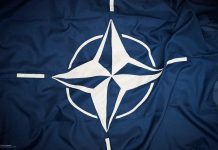
In June 2022, the Halcon initiative witnessed a significant development as Spain announced its intention to enhance its military capabilities by acquiring an additional 20 Eurofighter EF2000 combat aircraft, a substantial investment estimated at €2 billion. These newly acquired warplanes are strategically designated to replace the aging F/A-18 Hornet, marking a crucial transition.
Reflecting on history, it is worth noting that in the pivotal year of 1990, the US Navy transferred the F/A-18 aircraft to the Spanish Air Force, specifically equipping their 46th squadron stationed in the Canary Islands. The urgency behind this transfer arose from the limitations in upgrading the F/A-18, unlike the fifty other variants of the same model operated by the 12th and 15th Squadrons.
Looking ahead, Madrid has set its sights on expanding its fleet with the Eurofighter consortium. Notably, on September 12, the Spanish government officially expressed its desire to acquire an additional 25 EF-2000s. A significant aspect of this acquisition will involve upgrading these aircraft to the Tranche 4 standard, which includes advanced features such as the AESA CAPTOR-E electronic scanning active antenna radar and Meteor long-range air-to-air missiles.
However, Spain’s transition from the F/A-18s to the advanced Eurofighters will be a gradual process rather than an abrupt change. Madrid’s strategy entails maintaining the operational readiness of the US aircraft until at least 2030, with an estimated investment of approximately 1.4 billion euros for this new acquisition.
Considering financial constraints and strategic planning, the budget allocated for the Halcon program is expected to increase, reaching around 4.6 billion euros between 2023 and 2035. This financial provision will not only cover the procurement of an additional twenty-five EF-2000s but also address the previously under-supported financial needs of the program’s initial phase.
At present, the Spanish Air Force possesses a fleet of 69 Eurofighter EF-2000s, distributed among 17 Tranche 1 (the oldest version), 32 Tranche 2, and 20 Tranche 3 aircraft. The proposed order represents a significant expansion, increasing the total fleet size to 114 units. This move signifies Spain’s commitment to modernizing and strengthening its air defense capabilities in the coming years.
The inclusion of the F-35 in the equation is worth considering.
According to publicly disclosed plans, Madrid’s proposed order is poised to have a significant impact on the operations of the Airbus factory in Getafe, potentially straining its production capacity. This development may also lead to increased business for the British group BAE Systems, responsible for manufacturing more than one-third of the components used in Spanish-bound Eurofighters.
Nevertheless, as we contemplate a potential shift in Madrid’s strategic approach to its fighter jet fleet, there arises a need to explore additional fighter-bomber options to substitute for the aging F/A-18 Hornets. This consideration hints at the possibility of a third order for the Eurofighter EF-2000 in the near future. Alternatively, Madrid may choose to evaluate different aircraft, especially given that the SCAF (Future Combat Air System) is not expected to become operational until 2040.
This particular scenario was outlined in an August 2022 report by the daily newspaper El Pais, which asserted, “For the Spanish Air Force, the preferred choice is undeniably the F-35 Lightning II. Priced comparably to the Eurofighter, it offers markedly superior performance.” This conclusion underscores the potential appeal of the F-35 as an alternative.
Turning our attention to the Eurofighter Typhoon Tranche 4 aircraft, it brings forth several notable advancements compared to its predecessors. One of the most significant upgrades is its enhanced avionics system, featuring state-of-the-art technology encompassing advanced radar systems, improved electronic warfare capabilities, and upgraded communication systems.
The Eurofighter Typhoon Tranche 4 also excels in terms of performance and maneuverability. Equipped with a more powerful engine, it delivers improved speed, climb rate, and acceleration. Furthermore, its enhanced aerodynamics enhance maneuverability and agility, benefiting both air-to-air and air-to-ground missions.
Weapon systems on the Tranche 4 have been upgraded as well, enabling it to carry a wider range of advanced air-to-air and air-to-ground missiles, providing greater flexibility and firepower. Enhanced targeting systems contribute to improved accuracy and precision in weapon delivery.
Additionally, the Eurofighter Typhoon Tranche 4 focuses on reducing overall lifecycle costs by incorporating improved maintenance and support systems, resulting in reduced downtime and increased mission availability. Improved fuel efficiency also leads to lower operational costs, making it a cost-effective option in the long run.





